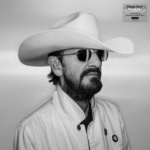Psychogeografie je název techniky, která zkoumá proměny fyzického prostoru v závislosti na našem vnitřním naladění. Výsledkem vnímání města či krajiny prizmatem psychogeografie jsou tzv. kognitivní mapy, které se od těch skutečných zásadně liší, neboť naše mysl některým místům přiřazuje bohatství významů, zatímco jiná prakticky opomíjí.
Jedním z těch, kteří s konceptem psychogeografie (a související psychosonologie) aktivně pracují ve své hudební tvorbě, je Joshua Sabin. Skotský umělec byl do letošního roku prakticky neznámý. Poté, co mu label Subtext vydal debutové album Terminus Drift, zařadil se Sabin mezi nejskloňovanější jména současné experimentální elektroniky.
Materiál na albu vychází z terénních nahrávek, které Sabin pořídil při svých cestách po světě. Z větší části jsou tu ke slyšení zvuky metra a dalších dopravních prostředků natočené v různých japonských městech, ale i například v Berlíně. Nejde však o field recording v jeho původní, syrové podobě, jako ho známe třeba z prací Jonáše Grusky. Veškeré nahrávky jsou v produkčním softwaru upraveny do podoby propracovaných kompozic.
Někdy Sabin zdrojové zvuky kombinuje do působivých celků, jindy si vystačí s jedinou nahrávkou, kterou pomocí softwarových efektů upravuje k nepoznání. Příkladem je titulní skladba desky, v níž je jediným zdrojovým zvukem hlášení o odjezdu vlaku z berlínského Hlavního nádraží.
Joshua Sabin bude jedním z hostů nadcházejícího dvanáctého pokračování série Silent Night, kterou v pražském Divadle Ponec pořádá Genot Centre. Kromě něj na akci vystoupí Kanaďanka Kara-Lis Coverdale a v Praze usazený Američan Lloyd Dunn, který stojí za projektem filecastů nula.cc. Sabinův podcast představuje hodinový průlet experimentálnější stránkou ambientní hudby, v druhé polovině pak dojde na úkrok do světa techna.
následující rozhovor ponecháváme výjimečně v původním znění
Tell us more about your podcast! Why does it sound the way it sounds?
The mix is really a blend of a few things – some artists that have been quite influential to me, music I am listening to right now, and also artists I have been fortunate enough to perform alongside this year. I listen to absolutely everything so this mix was more a task of restraint than careful curation!
You have quite an interesting academic background spanning pop, experimental electronic music and even orchestral works. Can we expect some wild style changes in the future or is the music on Terminus Drift something you want to pursue, creatively speaking?
Sonically, Terminus Drift kind of shaped itself – the aesthetic was in a lot of ways dictated by the compositional process, as I had limited myself to the recordings as the only material I could work with. This meant I would not have the option of synthesis or instruments to explore and augment the palette of sounds I could write with.
I would love to work with an orchestra or at least an instrumental ensemble again in the future. However, I don't feel this will be anytime soon. As much as I’m enjoying the current process, I would definitely want to move in another direction in my future projects. As with Terminus Drift I imagine the aesthetics of any new work will be controlled by certain limitations and concept – constraints are useful in focusing or crystallising an idea for me!
How did you end up releasing on Subtext? Did you approach them with the finished record or did they ask you to do a record for them?
Prior to releasing on Subtext I had never self-released or attempted to publish music. However, during the creation of Terminus Drift I was sure I wanted to approach a label. I admired the work of Emptyset, Roly Porter and Fis and felt (or hoped) I shared a similar approach to appeal to Subtext. Fortunately they were on board with what I had created and we discussed the work further to the point that they were prepared to support the album through to a release. It's quite something for them to have put their confidence in the album and so I'm incredibly lucky.
A lot of the field recordings underlying music on Terminus Drift comes from your journeys to Japan. Is it a coincidence or did you find the country really that sonically appealing?
Huge cities are inherently fascinating places. Japan, maybe more than anywhere else, has an incredibly ordered urban landscape and infrastructure – the manifestation perhaps of a quite unique socio-psychology. Alongside a constant strive for innovation, this means public spaces in the heart of Tokyo or Osaka and others can be really sonically and visually enveloping! Sirens, bells, tannoys, transport signalling, political and commercial advertisements, vast subway and train infrastructures, and millions of people. Present in these places are all kinds of sounds and sights, patterns and rhythms that I find inspiring to me as a composer.
When I travel it’s usually smells that become part of my mental map. Smell of Paris differs from the smell of London or New York. I take it it’s the same with sounds. What, for instance, are the typical sounds of Edinburgh?
Sound definitely makes up a huge part of my visceral experience of a new place or environment and of course each place will have its own sonic identity. Edinburgh is a small city with very limited infrastructure and so rather than the audiovisual density I described experiencing in Japan there is an openness and sparseness to the sound of the city. On quiet mornings you can hear horns from the harbour or those fucking bagpipers on the high-street drifting over the buildings and cutting through the gentle city hum.
What’s in store for you in the rest of the year and further in the future?
From releasing Terminus Drift in February, playing Open Source Art festival in Poland, and now (at the time of writing) looking forward to a Subtext night at Berghain's Säule and then of course Silent Night in Prague – it's been a baptism and an amazing year for me. I definitely plan to perform more over the coming months and I am excited and planning to embark upon new work and projects into the new year.













